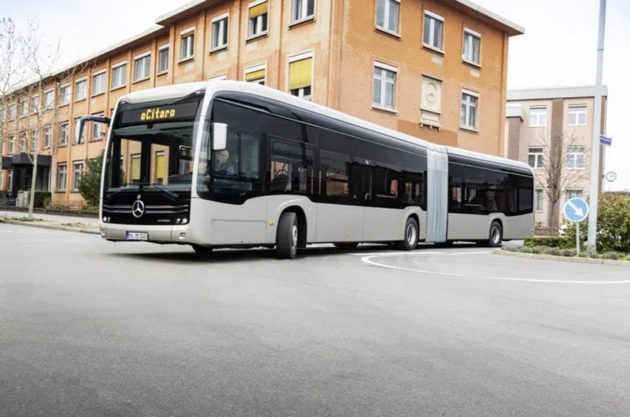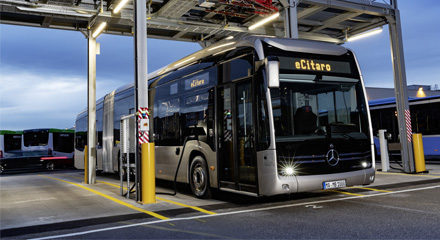For the first time in the bus segment, the eCitaro G will be available with an option of lithium-polymer solid state battery pack that achieves higher energy storage capacity than standard lithium-ion batteries (NMC).

A natural corollary in Daimler Buses’ progression in electrification of city buses under Mercedes-Benz eCitaro family, a fully-electric articulated variant has been introduced by the German bus maker. The new eCitaro G is 18.13-metres long with an option of three or four door, and can carry up to 146 passengers. It is ideal for operations in heavily-frequented towns and cities with large numbers of passengers.
“I am really very pleased that our Mercedes-Benz eCitaro has established itself very well since its market launch. This shows that we are on the right track, offering products that our society wants and that our customers can work with. With the eCitaro as an articulated bus variant, we are consistently continuing the electrification of city buses: the eCitaro G will be equipped with innovative solid state batteries on request. In doing so, we are setting the course for sustainable and efficient passenger transport in urban centers”, said Till Oberwörder, Head of Daimler Buses.

The company claims that it already has definite orders for over 60 of the new articulated e-bus from half a dozen cities across the globe. First batch of deliveries are scheduled for this year, it adds. The most interesting highlight is that the eCitaro G will be available with new and innovative battery technologies shortly after its official market launch. Daimler Buses has also declared that the eCitaro family will enhanced with fuel cell systems as range extender from 2022.
Conventionally, the eCitaro G is powered by NMC (Nickel Manganese Cobalt Oxide) variant of lithium-ion batteries. The OEM has hinted that it will shift to improved, next-generation of these batteries with eCitaro family this year itself, thereby increasing the capacity from 292 kWh to up to 396 kWh, while also extending the driving range accordingly. At the same time, the company will offer a second possible battery technology involving solid state batteries as an option for the buyers to choose.

Solid-state batteries are Lithium Metal Polymer (LMP) batteries that uses polymer electrolyte in solid form instead of liquid or gel-like electrolyte used in other battery types. They offer high energy density and long service life, while also covering other usage profiles than that of conventional NMC batteries. With seven battery packs of this kind, the eCitaro G achieves a remarkable capacity of 441 kWh. More capacity naturally translates into extended driving range, adequate for typical city operations. Daimler Buses is pursuing a two-fold strategy by offering both the battery technologies as an option for buyers, so that the eCitaro G is flexible enough to adapt itself to a variety of operational strategies of the operators.
Moving on, the new eCitaro G is designed as a standard push-pull articulated bus with a driven axle – a ZF AVE 130 electric axle – in the trailer. The variant can also be purchased with two driven axles to tackle demanding landscapes like winter roads. The front and rear sections of the articulated bus are connected by a low-floor articulation joint with an anti-jackknife control system (ATC). While the body is based on the conventional diesel-powered Citaro G, the eCitaro G’s roof is based on the Citaro G NGT with integrated heavy-duty rails.